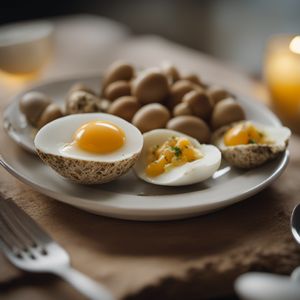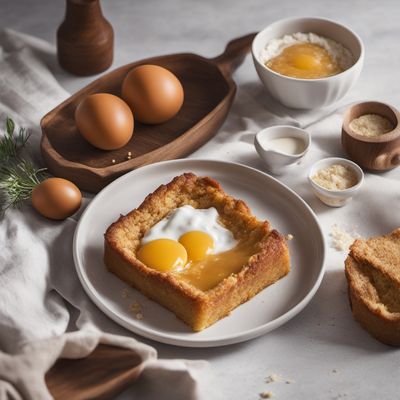
Dish
Æggekage
Danish egg dish with bacon and onions
Æggekage is made by whisking together eggs, milk, and flour to create a batter, which is then poured into a hot pan and cooked until golden brown. The dish is typically served hot and garnished with chopped parsley or chives.
Origins and history
Æggekage originated in Denmark and is a popular dish throughout the country. It is often served in cafes and restaurants as a breakfast or brunch dish.
Dietary considerations
Can be made gluten-free by using gluten-free flour
Variations
Variations of Æggekage include adding chopped ham or bacon to the dish for extra flavor and protein. Some recipes also call for adding chopped onions or garlic to the batter for added flavor.
Presentation and garnishing
Æggekage can be presented on a plate, with the edges slightly curled up and the center slightly sunken. It can be garnished with chopped parsley or chives for added color and flavor.
Tips & Tricks
To make the perfect Æggekage, be sure to use high-quality ingredients, including fresh eggs, milk, and flour. Be sure to whisk the batter well to create a smooth and creamy texture. When cooking the Æggekage, be sure to watch it carefully to prevent burning.
Side-dishes
Æggekage can be served with a side of sautéed mushrooms or grilled tomatoes for added flavor and nutrition. It can also be served with a side of bacon or sausage for added protein.
Drink pairings
Æggekage pairs well with a light and refreshing white wine, such as a Sauvignon Blanc or Pinot Grigio. It can also be served with a cold glass of milk or a hot cup of tea or coffee.
Delicious Æggekage recipes
More dishes from this category... Browse all »

Affunnatielle
Italian cuisine

Ajitsuke tamago
Japanese cuisine

Anglesey Eggs
Welsh cuisine

Balbuljata
Maltese cuisine

Black Pudding Scotch Egg
English cuisine

Búbos rántotta
Hungarian cuisine

Chai poh neng
Chinese cuisine

Chhài-pó͘-nn̄g
Taiwanese cuisine



